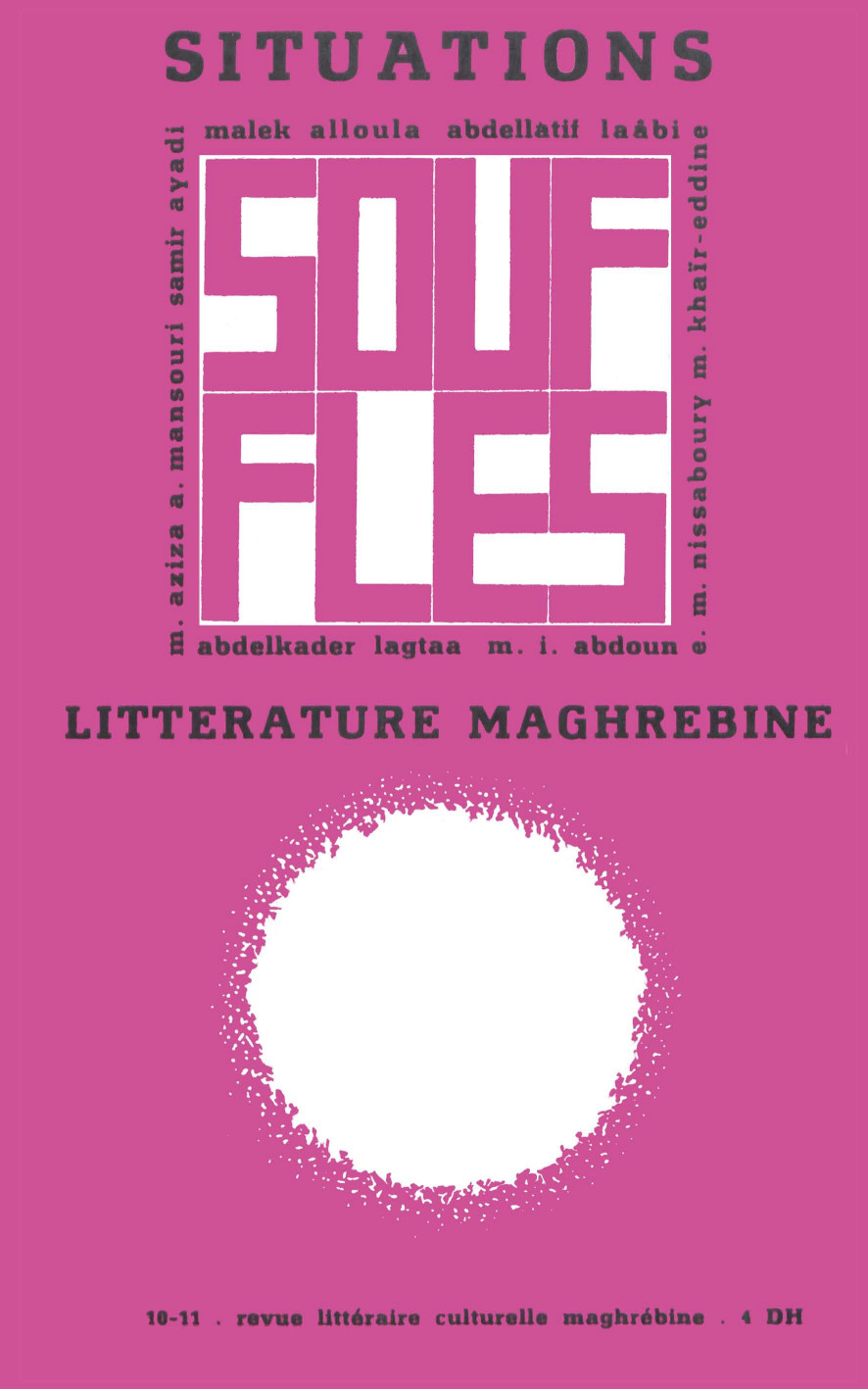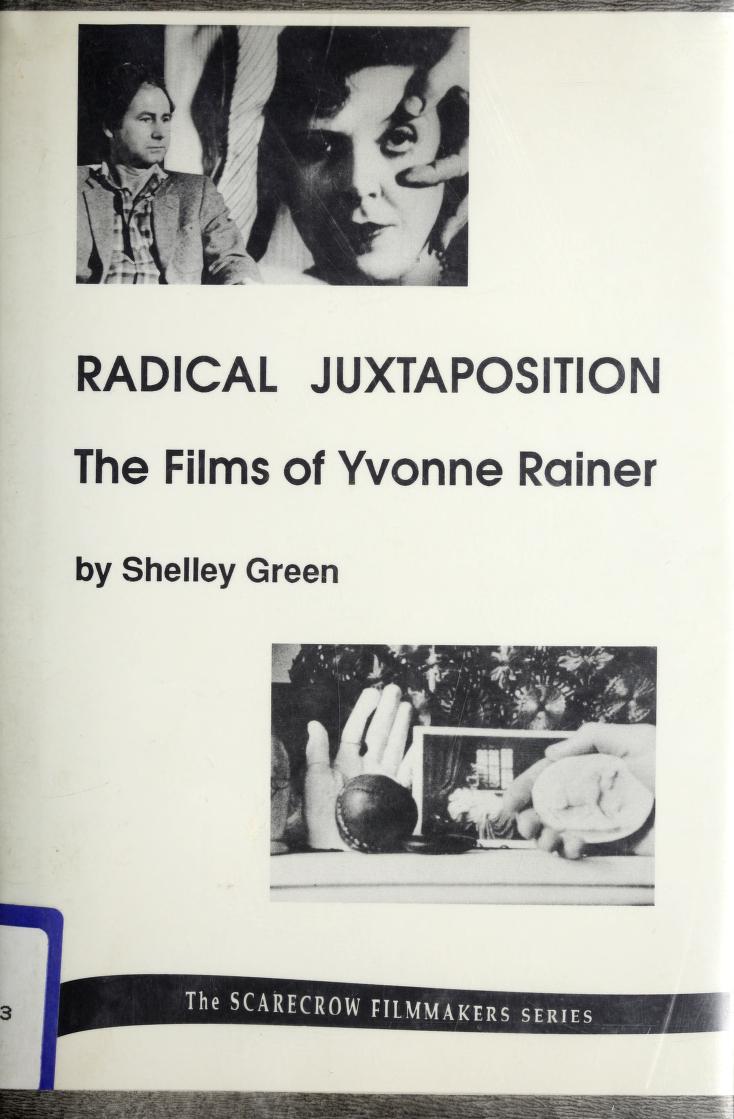Souffles: revue maghrébine littéraire et culturelle (1966-71) [French, Arabic]
Filed under magazine | Tags: · africa, art, film criticism, left, literature, maghreb, modernism, morocco, négritude, poetry


““This slim booklet contains dynamite,” wrote Policy in its 1966 review of new Moroccan quarterly magazine, Souffles. Instigated by a small group of self-professed “linguistic guerrillas” as “a manifesto for a new aesthetics in the Maghreb”, it became a conduit for a new generation of writers, artists, and intellectuals to stage a revolution against imperialist and colonial cultural domination. The starting point for this revolution was language.
From its first issue, Souffles posed an aggressive challenge to the traditional Francophone and Arabophone literary divides by encouraging experimentation, translations and collaborations. It wasn’t long before its trademark cover emblazoned with an intense black sun radiated throughout Africa, the Arab world, West Indies and the Black Atlantic. In the early 1970s the magazine changed focus. Motivated by the crushing Arab defeat in Six-Day War and the Paris uprisings, its founder, editor and publisher Abdellatif Laâbi declared that “literature was no longer sufficient.” After the 15th issue, dedicated to Palestine, Souffles underwent a major redesign, emerging as a new firebrand organ of leftist revolutionary group, Ila al-Amam. This new political agenda caught the attention of the authorities and in 1972 the magazine was banned and Laâbi arrested. While in prison he was awarded several international poetry prizes. After a long solidarity campaign, he regained his freedom in 1980.
Souffles was inspired by Frantz Fanon’s The Wretched of the Earth, as well as early postcolonial writers such Aime Cesaire, Mario de Andrade, and René Depestre and journals like Presence Africaine. Since its demise, few publications have matched its stature, appeal, or intellectual authority. Its influence can however be felt in contemporary magazines such as Le Journal, Nichane and Biddoun.” (Source)
Up to the double issue 10-11, the magazine was in French only, afterwards it also included Arabic section entitled Anfâs. The magazine cover was designed by painter Mohamed Melehi.
Edited by Abdellatif Laâbi
Published in Rabat, Morocco, 1966-71
via Bibliothèque nationale du royaume du Maroc
Editor
Writings about the magazine
The German Experimental Film of the 1990s (1996) [German/English]
Filed under brochure | Tags: · 1990s, cinema, experimental film, film, film criticism, germany

A survey of short experimental films made in Germany between 1990-95.
Der Deutsche experimentalfilm der 90er Jahre
Edited by Bruno Fischli and Carola Ferber
Written by Jochen Coldewey
Translation Martin Robinshaw
Publisher Goethe Institut, Munich, 1996
101 pages
PDF (68 MB)
Comment (0)Shelley Green: Radical Juxtaposition: The Films of Yvonne Rainer (1994)
Filed under book | Tags: · avant-garde, cinema, dance, experimental film, film, film criticism, gender, performance

“This volume examines the work of one of the central figures of the avant-garde from her first feature-length film in 1972, Lives of Performers, through Film About a Woman Who… (1974), Kristina Talking Pictures (1976), Journeys from Berlin/1971 (1980), The Man Who Envied Women (1985), to Privilege (1990). The comprehensive study surveys critical reaction and includes Rainer’s critical writings, photos, full biographical information, a complete filmography and bibliography.
The book also investigates dominant structural elements which enliven Rainer’s filmic texts: her complex and disjunctive use of language, speech, repetition, interpolated texts, fragmentation, self-conscious camera movement, autobiography and the formulation of alternative narrative codes. A focal point is the unique relationship established between the filmmaker and the spectator.
Rainer’s narrative strategies have been considered in a radical political context; the author specifically analyzes Rainer’s aggressive reexamination of form as it contributes to the politics of the personal and the political. Resonances created in complex construction of sound, image, editing, characterization, camera movement, and the obliteration and calculated reevaluation of these techniques often directly lead to a new construction of the female subject as well as the female spectator. By creating a cinema that may both construct and include its audience, Rainer’s work has vast implications. The author develops this significant aspect and addresses issues of race, age, and class, especially in later films.” (from the back cover)
Publisher Scarecrow Press, Metuchen, N.J., 1994
The Scarecrow Filmmakers Series, 41
ISBN 0810828634, 9780810828636
174 pages
Commentary: Strictly Film School (2005).
PDF (20 MB, no OCR)
See also Rainer’s films on UbuWeb.
Comment (0)
